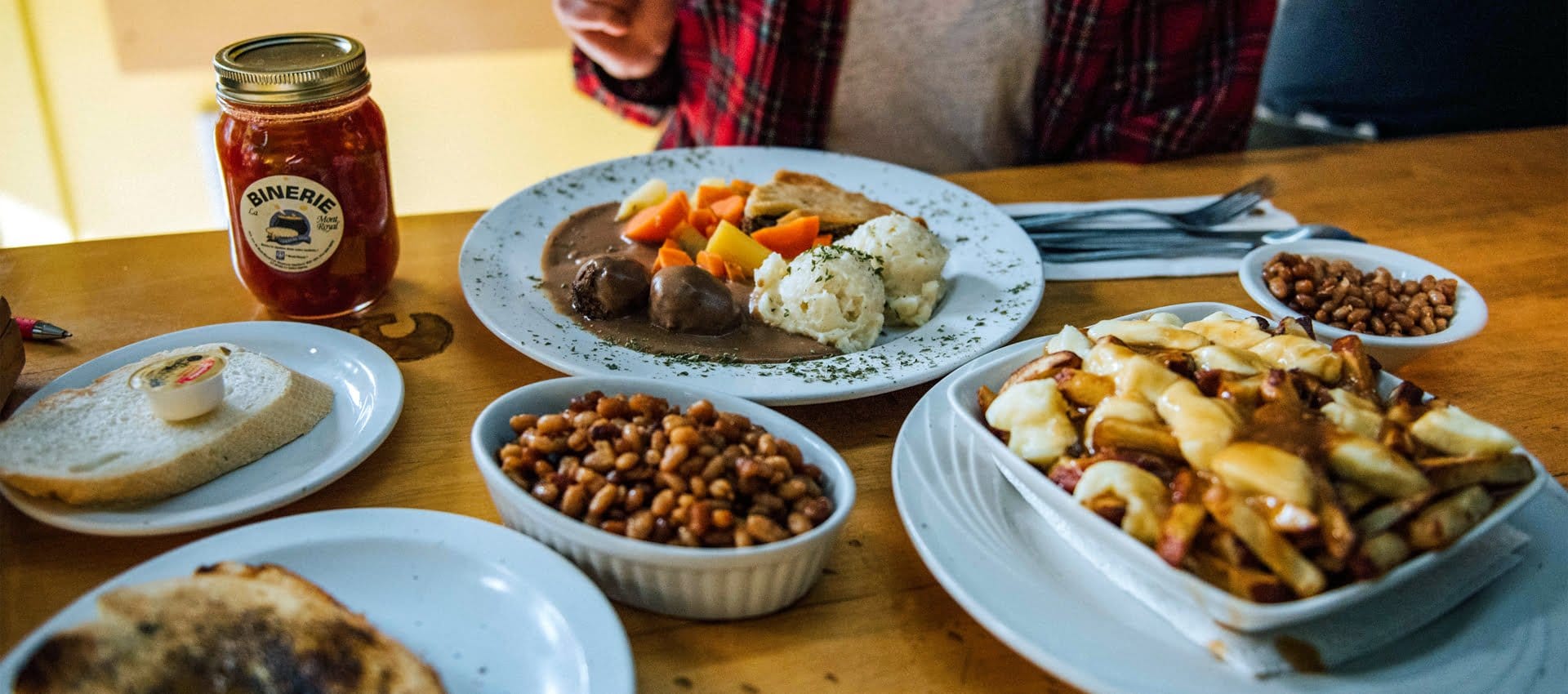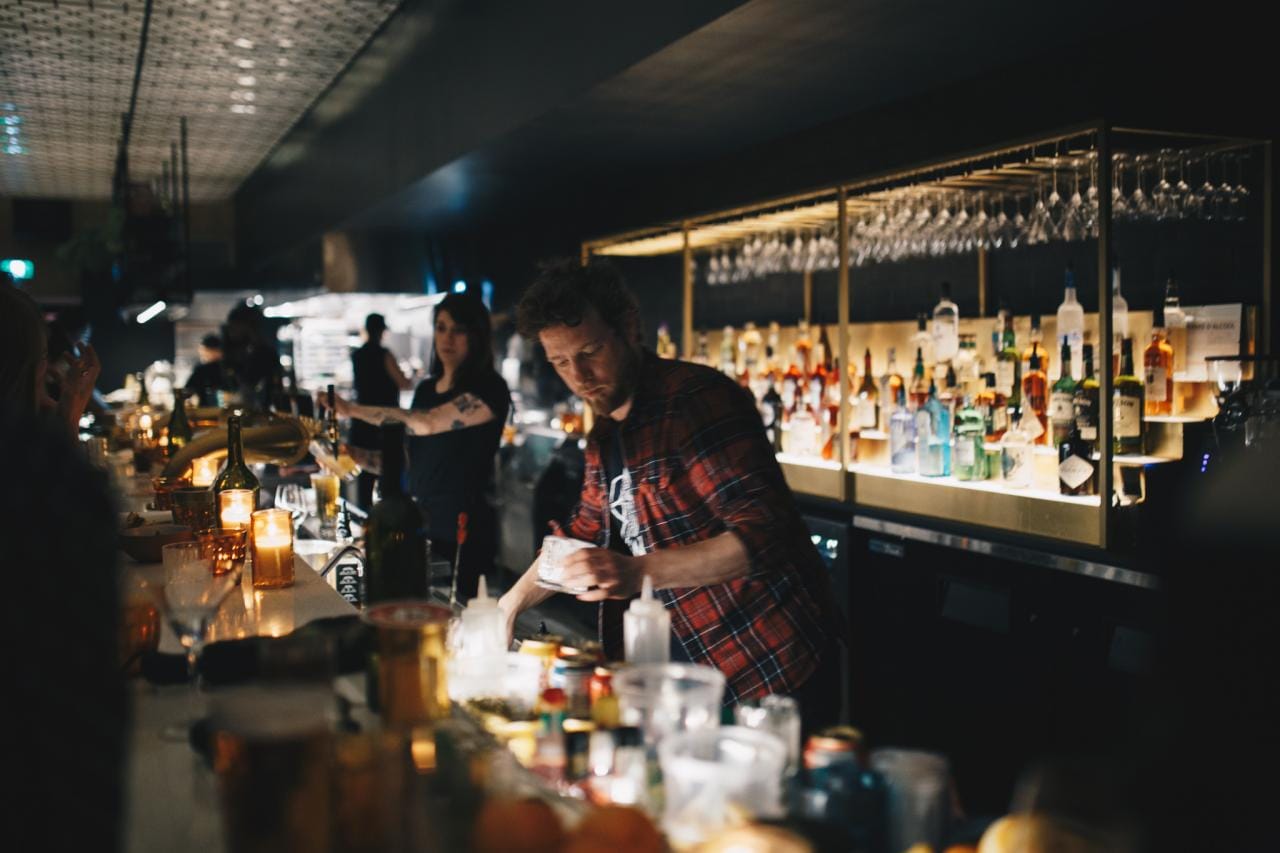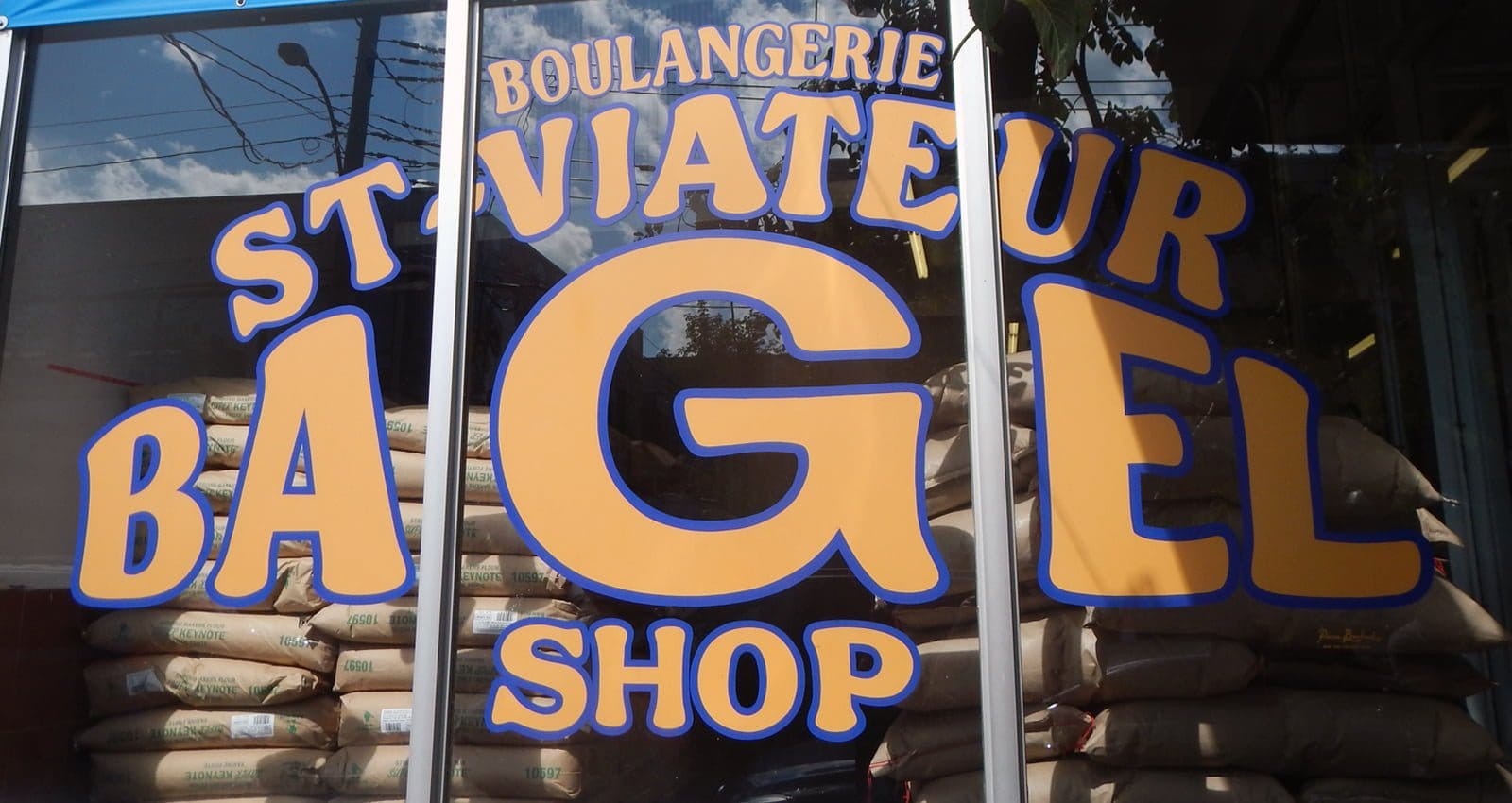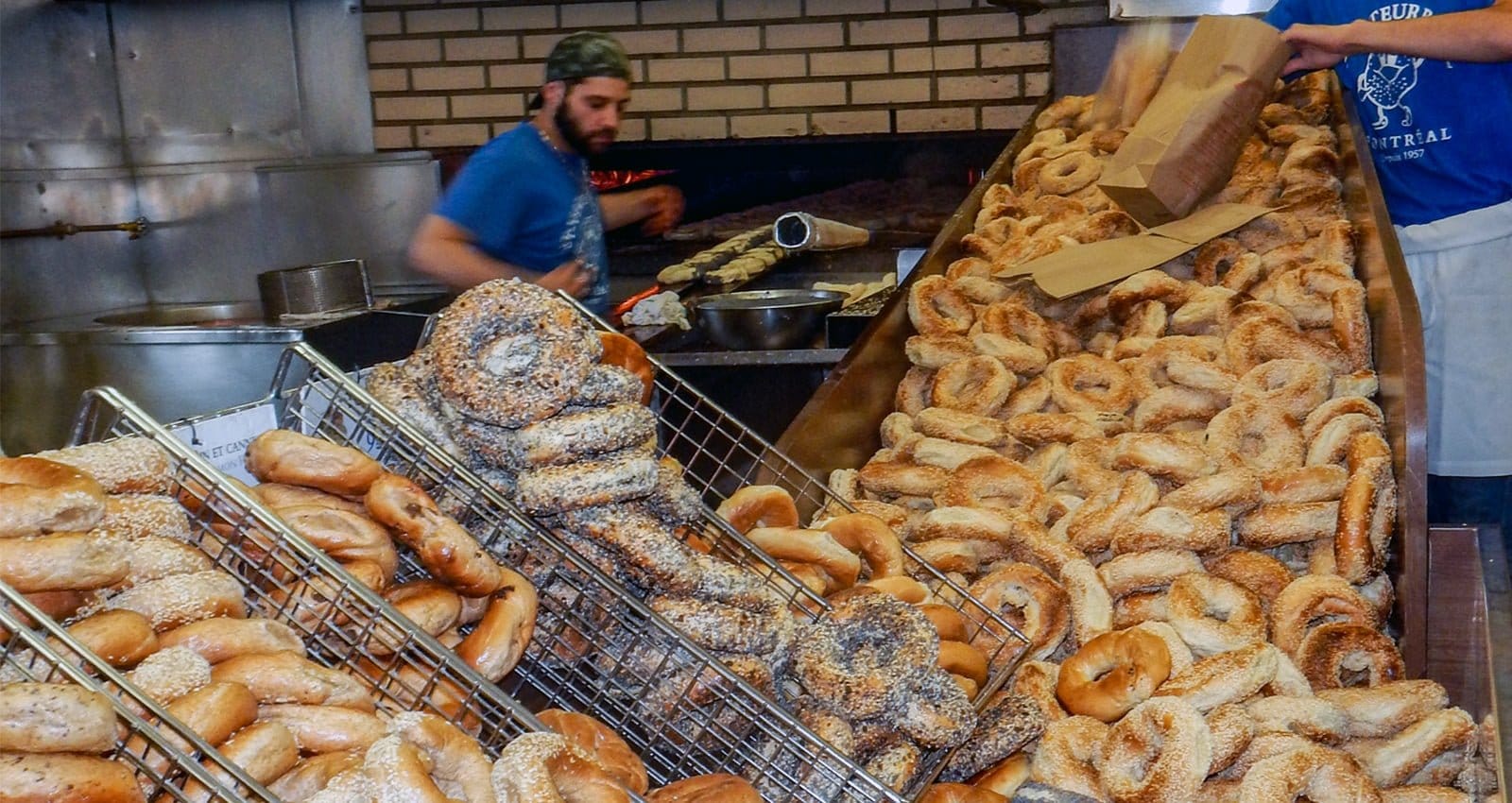
Photo Courtesy of Alison Slattery
It was a beautiful evening when my friends and I climbed the stairs to the Culinary Lab inside the Society of Technology building in Montreal’s Quartier des Spectacles. Fortunately for us, a table was empty at the restaurant’s outdoor terrace, one of the most popular destinations in the city to enjoy summer’s gifts.
We settled in under a big white umbrella and ordered drinks. It was a delightful setting, but I found my eyes drawn in through sliding doors to the open kitchen beyond. That’s where the action is. That’s what we came for.
Surrounded by trees, bushes and flowers, the terrace transports visitors to a lush, almost tropical oasis in the middle of the city, but it does more than that. It sets the stage for an extraordinary meal that also celebrates the bounties of Mother Nature and that probably would not have been offered anywhere in Montreal a few years ago.
Farm of Four Seasons. “I can point almost to the day when things changed in 2016, when area farmers began delivering directly to restaurants,” said Culinary Lab chef Adrien Renaud. “It changed the way we think about food in Montreal”.
Chef Renaud is talking about La Ferme de Quatre-Temps (The Farm of Four Seasons), an agricultural project that, among its many goals, seeks to develop a more ecological and nourishing food system in Quebec. One of the ways it achieves this is working with existing institutions, including independently-owned restaurants in Montreal.
With more than three million residents in the greater Montreal area, the city is blessed to have more than 7,000 restaurants of varying sizes and styles, serving vastly diverse cuisine. However, according to Chef Renaud, Montreal chefs had developed a hard-to-approach reputation. As a result, farmers outside of the metropolitan area rarely approached restaurants directly. Nor did chefs reach out to independent growers, instead relying on hot-house produce or produce shipped in from long distances all year long. The result was certainly decent cuisine, but many dishes had become ho-hum, lacking an exciting, distinguishing local flavor that sophisticated foodies have come to expect.
“We have developed a better understanding and sensitivity to each others’ challenges,” Renaud says of the relationship he has with growers. “We have a dialogue now that results in a collaborative process which benefits everyone.”
Chef Renaud is all but giddy as he talks about the richness of the heirloom tomatoes, eggplants, and peppers he now works with all year round. Fresh flowers have become a common ingredient. He and other chefs now order whole animals rather than specific cuts from suppliers.
“My whole approach to cooking has changed,” he says. “Rather than following a recipe or my training, I listen to what the product tells me. I let it lead the way based on its unique flavor that often differs from week to week.”
Despite his restaurant’s name, Culinary Lab, Chef Renaud is not one to push the envelop or experiment with molecular cooking and the chemical transformation of ingredients. He prefers classic tastes in the dozen or so dishes that appear on his menu each night.
Women Chefs, An Important Influence. The evolution in the Montreal food scene launched by La Ferme de Quatre-Temps coincided with a rise in the number of female chefs making a name for themselves. An organization called Le Femmes Chefs de Montreal created monthly programs that showcased their restaurants and their contributions to local cuisine.
For example, Emily Homsy, formerly with Au Pied de Cochon (check out the pork stew at this classic, must-try Montreal restaurant), has recently turned a run-down neighborhood bar into a classy, relaxed gathering spot with good food and spirits.
Another great find was Bar Saint-Denis in La Petite-Patrie, a place where we got to know a few locals while enjoying a beef bavette with pepper sauce and a local craft beer.

Bar Saint-Denis in La Petite-Patrie | Photo Courtesy of Andrea O’Connor
Our getaway to Montreal had to include at least two destinations for breakfast, brunch and/or lunch. My first recommendation would be Butterblume in the Mile End. Two accomplished chefs, Nadine Boudreau, and Julie Romano joined forces to create a boutique restaurant and grocery with unexpected offerings. ‘Not your typical combination of bacon, eggs, and potatoes on the menu. Instead, the menu has a distinct German flare. (Butterblume is German for buttercup.) We tried the German ravioli, cauliflower cake, and currywurst. The black sesame toast with beef and fried egg looked as yummy as did the tartine with hazelnut spread. Then we grabbed a bag of baked goods to enjoy later.
More Musts. Lunch is not a big event in Montreal. Indeed, many restaurants are not open until the evening. Don’t worry. La Binerie is where locals and visitors go, who need midday sustenance. Since 1938, this has been the hot spot for authentic French-Canadian cuisine. When Phil Brunet bought the restaurant from the original owners, the Lussiere family, he received the recipe to La Binerie’s famous maple syrup beans, but only after the contracts had been signed, the check had cleared the bank, and the keys had been handed over.
The beans at La Binerie are almost as famous as the meat pies. Brunet, who is from Ottawa though his wife is from Quebec, is particularly proud that everything in his restaurant is made by hand, even the potatoes for the Shepard’s Pie are peeled by hand every morning.
Don’t forget the bagels! No trip to Montreal is complete without bagels. New Yorkers might not think of this French-Canadian city as the place to find some of the best bagels you’ve ever schmeared a schmear on. Fairmount Bagels opened on Fairmount Street in 1919, the first bagel shop in Montreal. The Schlafman family rolled the dough by hand and baked it in a wood-fired oven. Seven days a week, 24 hours a day, Fairmount Bagels still produces fresh, out-of-the-oven bagels in seven locations around the city.
Nearly 40 years after Isadore Schlafman baked his first bagel, Myer Lewkowicz, a Polish immigrant who had survived the Buchenwald concentration camp, opened his first business in Canada. Located on St. Viateur Street, he named his business St. Viateur Bagels. What differentiates St. Viateur Bagels from Fairmount Bagels a half-mile away is that St. Viateur Bagels are boiled in honey water for a minute before they go into the wood-fired oven. It makes the crust crunchy, yet the insides are not chewy like many bagels.
My friends and I visited both bagel shops during our time in Montreal and both times there was a line out the door. Don’t worry, it moves fast and is as well worth the wait. Order a bagful to enjoy on your train ride home.

Photo Courtesy of Diana Lambden Meyer

Photo Courtesy of Diana Lambden Meyer
Take Amtrak to Montréal
Amtrak’s Adirondack (#69) departs each morning from New York City (NYP) and arrives at Montréal Central Station (MTR), 10 hours later. The Adirondack (#68) also departs MTR each morning to NYP. Proper documents (passport or similar) are required to cross the United States-Canada border. Check Amtrak.com for reservations, which are required, and for more information on crossing the border by train.
Montréal is walkable and bikeable. Bixi is Montréal’s bike-share program. A bike station is located on Rue de la Gauchetière, one block from MTR. Or take the Montréal Metro (subway) or Lyft to destinations throughout the city.



